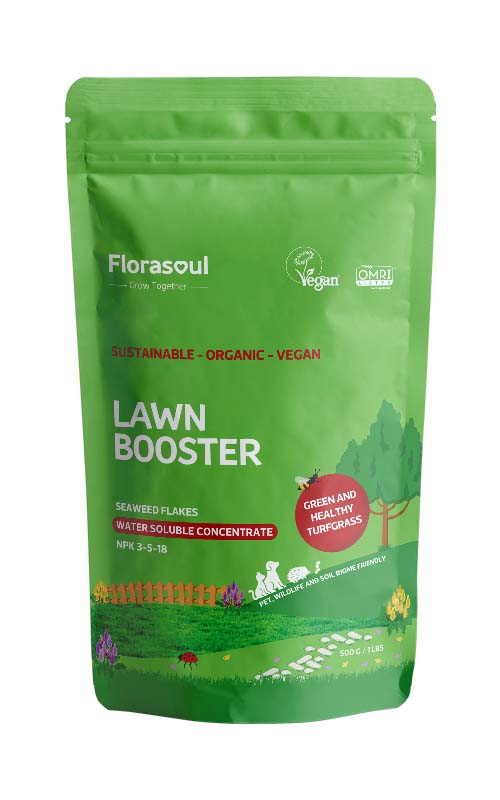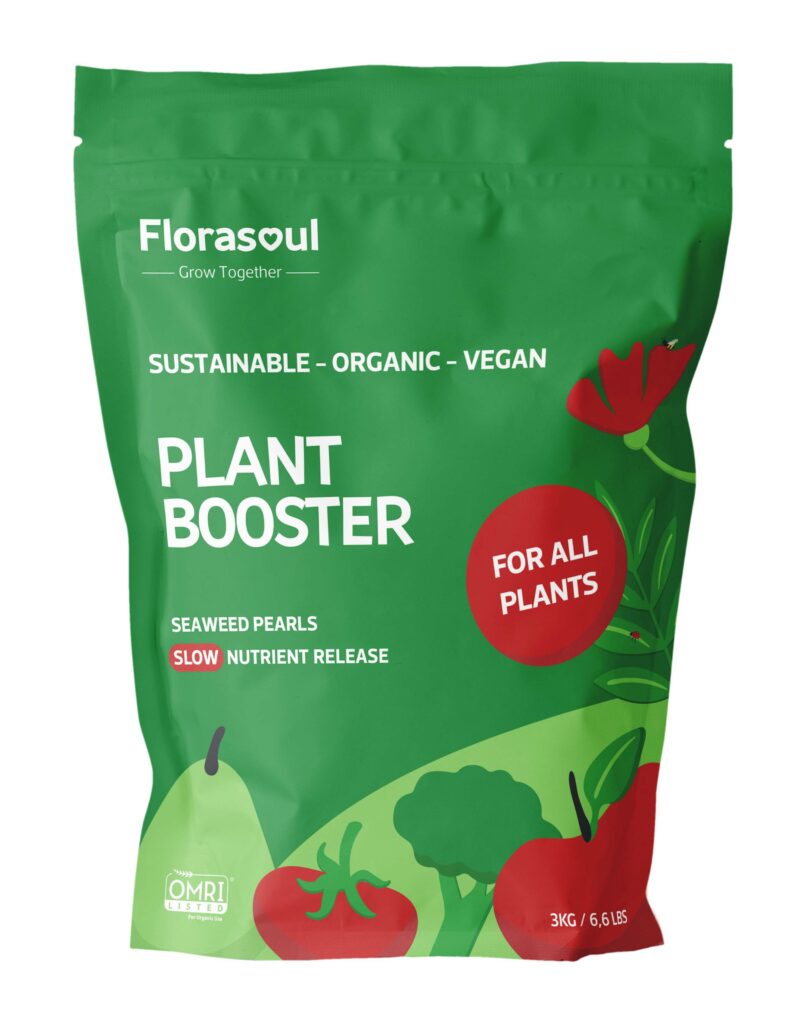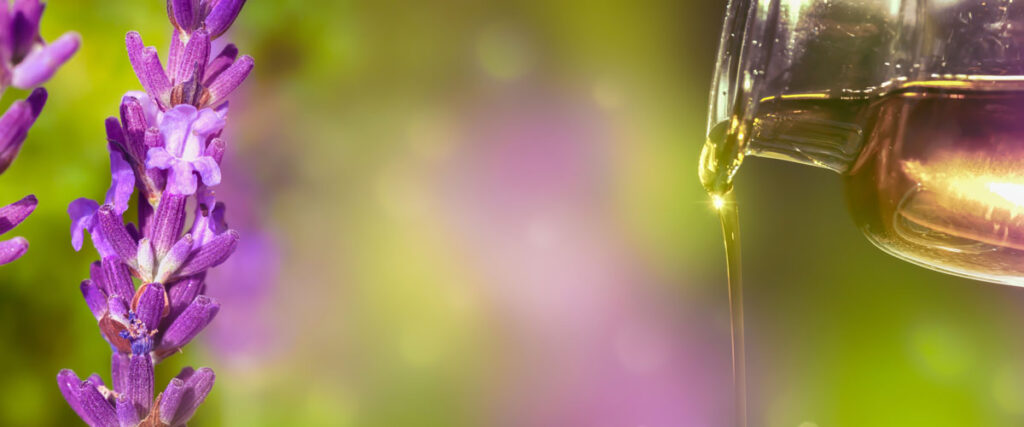Vegan Lawn
Green and healthy lawn with plant-based fertilizer
by Dr. Silke Will
Veganic growing is the most innovative and modern way of growing plants.
Organic growing products are widely used in conventional and organic gardening. They are easy and cheap to get, since the meat industry is constantly discarding animal byproducts such as manure, dried blood, bone meal, ground up feathers or byproducts from the fishing industry.
The vegetarian and vegan movement gained a lot of popularity in the last centuries. The concepts are well recognized worldwide. Slowly but consistently they adapt into all areas of life also in innovative concepts of nurturing plants.
Tips for natural lawn care
Nowadays, the lawn is an integral part of our everyday life. Children and pets play on the green area in the home garden, the park meadow is the ideal basis for a cozy picnic and many sports such as football, golf and soccer are played on lawns. Flower and herb lawns are colorful attractions for beneficial insects such as bees and bumblebees as well as small animals.
Lawn invites you to play, have a picnic, relax and enjoy.
In order for the lawn to withstand all the stress, it needs care and sufficient nutrient supply. For a sustainable, robust lawn, the soil plays an important role, because it houses the roots of the plants, which ensure the survival of the grass blades.
In contrast to mineral lawn fertilizers, organic lawn fertilizers offer not only the essential nutrients for the plants but also numerous ingredients that improve the soil and activate beneficial microorganisms.
Tab. 1: Comparison of environmental impacts of organic vs. mineral fertilizer
Environmental Impact
Organic fertilizer
Mineral fertilizer
Soil Fertility
Increase biodiversity and activity of soil organisms, improve soil structure, reduce soil-borne diseases and pests
Decrease biodiversity and activity of soil organism, deterioration of soil structure, increase risk of soil-borne diseases and pests
Humus content
Increases the humus content and thus the nutrient and water storage capacity
Increases humus degradation, deterioration of soil fertility
Overfertilization, leaching
No over-fertilization and leaching of nutrients
Over-fertilization and leaching of nutrients into groundwater
Sustainability
Creates a sustainably healthy soil
Effects only the plants, negative impact on soil
In addition to a good supply of nutrients, there are some additional care to consider for a healthy nice looking lawn.
Reseeding and sowing
Before planting a new lawn, you need to check the soil first. Soil with high clay content gets too compacted if the lawn is used heavily. Loamy soil can be mixed with sand. In this way you improve the structure of the soil and establish a perfect subground for the turf grass.
The best sowing time is mid-April to mid-June when temperatures are between 57-77°F / 14-25°C.
Irrigation
The lawn should be watered once a week until the topsoil is well soaked 4-6 Inches deep. Additional watering may be necessary in the summer months. If your lawn gets too dry, the leaves curl up and the blades do not recover after stepping on them. Check the moisture level of the soil by sticking a knife or screwdriver into the soil, soil will stick on the device if there is enough water.
Soil aeration
Aeration is a practice to open the soil surface for better movement of air, water and nutrients. It is a practice that also helps to reduce compaction. Small holes are drilled into the soil with a tine roller. Aeration after the hot summer months and heavy use is worthwhile and can be combined with autumn fertilization.
Mowing
Mowing the lawn is the most intensive work on your lawn. For a natural lawn, the blades of grass should be kept as long as possible, this protects the soil and prevents the growth of unwanted wild plants. The trimmings should be left in place. After 2 days at the latest, they are dried out and are no longer a problem when sitting on the lawn.
How to apply Florasoul Lawn Booster and/ or Florasoul Plant Booster All Purpose Seaweed Pearls (long-term effect)
The Lawn Booster is a highly concentrated dried plant extract that is mixed with water and spread over the lawn with a sprayer or watering can. The nutrients are immediately available to the plants. Fertilization must be repeated at least every 4 weeks.
The Plant Booster Seaweed Pearls (long-term effect) consists of small pearls that are distributed on the lawn. The nutrients are not immediately available, but are slowly released with each watering and rain. Fertilization is repeated every 3 months.
Both products complement each other perfectly. Slow-release fertilizer is used as basic fertilization, similar to our human routine of breakfast, lunch and dinner. The liquid fertilizer stands for the snacks in between. Anyone who does a lot of sport or physical work needs an energy boost between meals. Similarly, plants require additional nutrition when they are under stress. This can be hot temperatures, wind or walking on the lawn.
Application recommendation for Florasoul Lawn Booster and/ or Florasoul Plant Booster All Purpose Seaweed Pearls (long-term effect)
Florasoul Plant Booster Seaweed Pearls (long-term effect)
The slow release fertilizer is applied 3-4 times a year. Beginning with spring fertilization in February until autumn fertilization in November. Biological fertilizer is a sustainable investment for the plants and the soil. Soil fertility is maintained and promoted, the plants develop an optimal root system and the turf grass can develop magnificently.
Florasoul Lawn Booster
Preparation of the liquid fertilizer:
We recommend the following mixture
1 gal of water: ¾ tsp SEAWEED flakes / 1 teaspoon SEAWEED flakes per 5l of water
3 gal of water: ¼ tbsp SEAWEED flakes / 1 tablespoon SEAWEED flakes per 10l of water
Tab.1: Feeding chart for the application of Florasoul Lawn Booster for different types of lawn
Lawn type
Aim
Recommendations for liquid Lawn Booster
NOTE: application early in the morning or late afternoon to avoid grass blades burning
Ornamental lawn
– Boost germination and initial development
– Increase resilience
Apply every 2-4 weeks during growing season
Utility lawn
– Boost germination and initial development
– Increase resilience
Apply every 2-4 weeks during growing season
Shadow lawn
– Boost germination and initial development
– Increase resilience
Apply every 2-3 weeks during growing season
Lawn for dry location
– Boost germination and initial development
– Increase resilience
Apply every 2 weeks during growing season
Mulch lawn
– Boost germination and initial development
– Increase resilience
Apply every 4-6 weeks during growing season
Herb lawn
– Boost vitality and flowering
– Stress tolerance
Apply 3-4 times during growing season
Flower meadow
– Boost vitality and flowering
– Stress tolerance
Apply every 3-4 weeks during growing season
Extensive roof garden
– Boost vitality and flowering
– Stress tolerance
Apply during dry weather conditions



